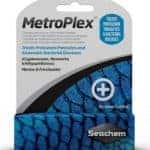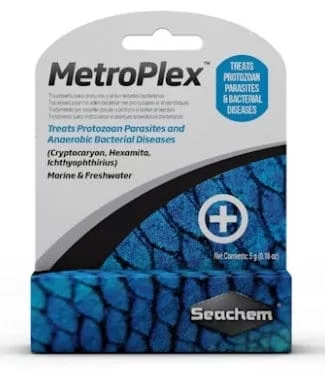Introduction ????????
Welcome to the ultimate guide on Metronidazole for Fish, an essential medication in aquatic pet care. This comprehensive article covers various aspects of using Metronidazole, ensuring your fish’s well-being and maintaining a healthy aquatic environment.
Metronidazole: A Lifesaver for Your Aquarium Inhabitants
Maintaining a healthy aquarium is like tending a delicate ecosystem. One minute your fish are swimming happily, the next they’re exhibiting strange behavior, and you’re desperately searching for answers. Enter metronidazole, a powerful medication that can be a lifesaver for your finny friends.
What is Metronidazole?
Metronidazole, also known by brand names like Flagyl and Metrogyl, is a broad-spectrum antibiotic effective against both bacteria and protozoa. In the aquarium world, it’s a go-to treatment for various internal and external parasites, bacterial infections, and even some skin diseases.
Metronidazole Dosage for Fish:
The key to successful treatment lies in the right dosage. Unlike human prescriptions, aquarium medication often requires calculations based on your tank’s water volume. Here’s a general guideline, but always consult your veterinarian or a qualified aquarist for specific recommendations:
- Tablets: Dissolve 250mg metronidazole tablet per 10 gallons of water. Repeat every 24 hours for 5-7 days.
- Powdered forms: Follow the product instructions for the specific concentration you have.
- Food additives: Mix metronidazole powder into fish food at a rate of 10-20mg per kilogram of fish body weight twice daily for 5-7 days.
What Does Metronidazole Treat in Fish?
Metronidazole’s versatility shines through its diverse treatment range:
- Protozoan parasites: Hexamita (hole-in-the-head disease), Spironucleus (whirling disease), Cryptocaryon irritans (white spot disease)
- Bacterial infections: Aeromonas, Pseudomonas, Vibrio
- Anaerobic bacterial infections: Gas пузырь disease, fin rot
- Skin conditions: Ulcers, fin erosion
Can I Use Human Metronidazole for Fish?
While human metronidazole may work in a pinch, it’s not recommended for several reasons:
- Dosage inaccuracies: Human formulations are typically much stronger and can easily overdose sensitive fish.
- Inactive ingredients: Human pills may contain additives harmful to aquatic life.
- Antibiotic resistance: Overusing human antibiotics can contribute to antibiotic resistance in fish and humans.
Alternatives to Metronidazole:
In case of allergies or resistance to metronidazole, consider these options:
- Dimazole (Dimitridazole): Similar efficacy, but gentler on some fish.
- Kanamycin: Effective against bacterial infections, but can harm sensitive fish.
- Ciprofloxacin: Broad-spectrum antibiotic, use with caution due to potential antibiotic resistance.
Remember:
- Always perform a water change before and after treatment.
- Monitor your fish closely for any adverse reactions.
- Quarantine sick fish to prevent spreading infections.
- Consult a veterinarian or aquarist for complex cases.
Understanding Metronidazole for Fish ????????
Explore the significance of Metronidazole and its impact on fish health.
Metronidazole is a potent antibiotic and antiprotozoal medication used widely in fish medication. ???? It effectively treats various bacterial and parasitic infections commonly found in aquarium fish, ensuring their health and longevity. ????
Importance of Medication in Aquatic Environments ????????
Discover why Metronidazole is crucial in treating various fish-related health issues.
Maintaining a clean and healthy aquatic environment is vital for the overall well-being of fish. Metronidazole plays a pivotal role in addressing bacterial and parasitic infections, ensuring a thriving ecosystem within aquariums and fish tanks. ????
The Functionality of Metronidazole for Fish ????????
Delve into how Metronidazole functions within the fish’s system, aiding in recovery and prevention of diseases.
Metronidazole works by interfering with the DNA of bacteria and parasites, effectively inhibiting their growth and ultimately eradicating the infection. This mechanism ensures a rapid recovery and boosts the fish’s immune system. ????
Safe Usage Guidelines for Metronidazole in Aquatic Pets ????????
Learn the proper dosage, administration, and precautions for using Metronidazole, ensuring the well-being of your aquatic pets.
When using Metronidazole, it’s crucial to follow dosage instructions precisely according to the fish’s size and condition. Additionally, conduct water changes and maintain optimal tank conditions to support the treatment’s effectiveness. ????
Administering Metronidazole for Optimal Results ????????
Understand the best practices when administering Metronidazole to maximize its effectiveness and ensure the fish’s recovery.
For optimal results, consider a quarantine tank for infected fish to prevent the spread of disease. Carefully monitor their progress and complete the prescribed treatment course as advised by a vet or fish expert. ????
Side Effects and Precautions ⚠️????
Explore potential side effects and necessary precautions when using Metronidazole for Fish, ensuring a safe treatment process.
While Metronidazole is generally safe, some fish may exhibit side effects such as loss of appetite or discoloration. It’s crucial to monitor their behavior closely and consult a vet if any adverse reactions occur. ????
Alternatives to Metronidazole ????????
Discover alternative treatments and methods available for fish health issues, exploring options beyond Metronidazole.
In cases where Metronidazole isn’t suitable or effective, fish owners can explore natural remedies or alternative medications recommended by aquatic specialists. Proper research and consultation are advised before opting for alternatives. ????
Ensuring a Healthy Environment for Fish Recovery ????????
Learn how to maintain a conducive environment for your fish’s recovery while undergoing Metronidazole treatment.
Regular water quality checks, adequate filtration, and a balanced diet contribute significantly to the fish’s healing process. Creating a stress-free environment aids in their quick recovery. ????
Metronidazole for Fish: Dosage and Administration ????????
Discover the recommended dosage and detailed administration procedures for Metronidazole in different fish species.
Dosage varies based on the fish’s weight and specific condition. It’s essential to follow vet-prescribed guidelines to avoid under or over-medication, ensuring the treatment’s effectiveness without harming the fish. ????
Effectiveness of Metronidazole in Different Fish Species ????????
Explore how Metronidazole varies in its effectiveness concerning different fish species and their specific health concerns.
Certain fish species may respond differently to Metronidazole. Understanding these variations helps fish owners tailor treatments to suit their specific aquatic pets’ needs. ????
Conclusion ????????
Metronidazole for Fish is an essential medication in maintaining the health and well-being of your aquatic pets. Proper understanding, administration, and precautions are vital for its effective and safe use. Always consult a vet for guidance on dosage and any concerns regarding your fish’s health.
FAQs About Metronidazole for Fish
What is metronidazole for fish?

Description. Fish Aid Antibiotics® Metronidazole is an antibiotic that exerts a bactericidal action on gram-positive and some gram-negative bacteria in fish. Useful to help control some common bacterial diseases in fish such as Aeromonas, Pseudomonas, and Mycobacterial (Gill diseases and Chondrococcus).
What types of infections is metronidazole used for?
About metronidazole
Metronidazole is an antibiotic. It’s used to treat skin infections, rosacea and mouth infections (including infected gums and dental abscesses). It’s used in the treatment of conditions such as bacterial vaginosis and pelvic inflammatory disease
How do you mix metronidazole in fish food?
Add 1-2 scoops of Focus and Metronidazole to the food along with a teaspoon of liquid food supplement or aquarium water. First, mix the medication with the liquid food supplement (or water) then add your fish food. Allow the medication to soak in for 15 minutes and you are ready to feed your fish!
What does metronidazole treat in fish?
“Metronidazole is an anti-protozoan fish medication used to treat hexamita (hole in the head disease or Malawi bloat), body slime (chilodonella), freshwater ich, epistylis in pond fish.” “The use of medicated foods is the only way to effectively treat internal disease.
How do you give metronidazole to fish?
Metronidazole Dose: 400-600 mg/100 liter for 3 days After this, aquarium water can be completely change or 50% waterchange combined with carbon filtration for at least 24-48 hours. In the food: mix 1 gm with 100 gm food and keep feeding this mixture for 3-5.
Can you overdose metronidazole in fish?
MetroPlex™ is gentle and there little danger of overdosing.
If you want to learn also the koi fish meaning on koi fish tattoo
You may also like
- https://www.giobelkoicenter.com/ghost-koi/
- https://www.giobelkoicenter.com/koi-fish-colors/
- https://www.giobelkoicenter.com/koi-fish-dreams/
- https://www.giobelkoicenter.com/koi-fish-meaning/
